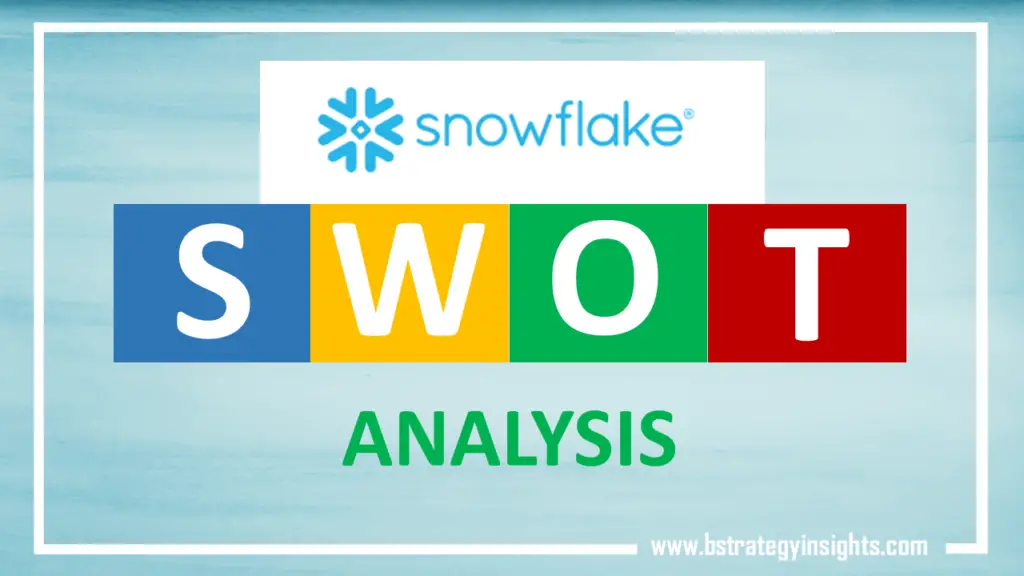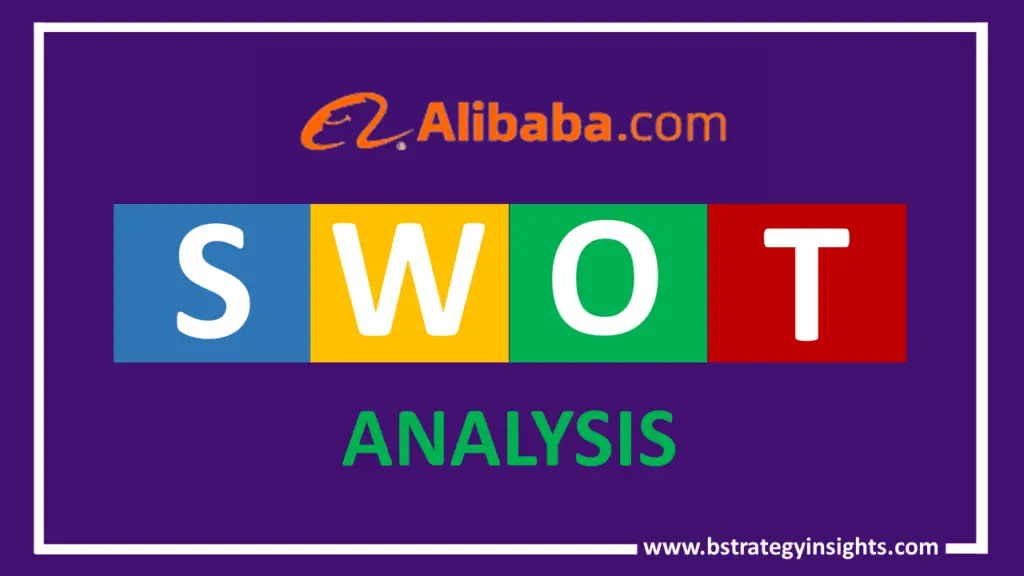
A SWOT analysis is a critical tool for every company to help check where they are standing. Every company needs to be aware of its strengths and weaknesses so that it works on eliminating its weaknesses using its strengths. Additionally, there is a need to know the opportunities in the market so that the brand takes advantage of those opportunities for growth.
And lastly, every brand needs to be aware of the threats that exist in the market so that they prepare to strategically tackle such threats. Snowflake is a Montana-based cloud computing platform that deals with the design and development of data warehouse and analysis solutions for customers. It enables businesses to store and analyze data using cloud-based hardware and software. Here is the company’s SWOT analysis.
Snowflake – At a Glance
| Name | Snowflake Inc |
| Website | www.snowflake.com |
| Founders | Benoit Dageville, Thierry Cruanes, Marcin Żukowski |
| Chief Executive Officer (C.E.O.) | Frank Slootman |
| Headquarters | Bozeman, Montana |
| Type of Corporation | Public |
| Year Founded | July 23, 2012 |
| Revenues (2019) | $592 million (2020) |
| Key Products/Services | Cloud Data Platform |
| Key Competitors | Amazon Web Services (AWS), Microsoft, Google, Cloudera, Oracle, Teradata, IBM, Databricks. |
Strengths of Snowflake
Strong Product
Data warehousing has become a critical part of the modern-day data-centered business world. Snowflake’s cloud computing software is revolutionizing the data warehouse industry and bringing in unique architecture, increased ease of use, advanced features in the software, and friendly pricing models. The brand’s cloud design is compatible with cross-cloud applications and multi-cloud systems so that users are able to deploy it on cloud providers like Google, Microsoft, and Amazon, among others.
Snowflake’s key advantages include a cloud-first approach, the ability to support multiple data structures, advanced capabilities for data sharing, and it supports independent scalability of computation and storage so that customers pay on the go, with better access and security among others. Given it is procured as SaaS, it can be implemented quickly with limited interruptions of daily operations.
A market Leader
Snowflake is ranked first in the Forbe’s cloud 100. The brand’s CEO approval rating, according to owler.com, is 79/100, which is the highest relative to that of its competitors like Cloudera, Teradata, and panoply, among others. The brand’s CEO is specialized in the industry and, therefore, a leader in cloud computing, thus enhancing the brand’s leadership position.
Strong Financial Performance
The brand has registered very impressive financial performance over the years that culminated in a super IPO in 2020. While in the first quarter of 2021, the company registered a slight dip, the second quarter saw the company post a stronger than expected financial result of 103% year-over-year growth to $254.6.
A strong financial base gives the brand more impetus for innovation and expansion to strengthen the brand’s product, increase customer satisfaction and get more market shares and investment. The company’s strong financial performance is attributed to the increased intake of the brand’s products by customers.
Low-Cost Structure
Snowflake differentiates itself from the competition through a cost-effective strategy. While customers need to pay for the computer and storage that they use, they are able to store unlimited amounts of data at discounted rates. The product has an on and off feature to enable users to choose features and functions so that they are only charged for what they use. In the end, businesses receive value for their money.
Strong Customer Loyalty and Satisfaction
Trustradius.com top-rates the brand at 9/10, g2.com rates the company 4.6/5 stars from 294 reviews, featuredcustomers.com rate the brand at 4.7/5 stars from 1,844 reviews, capterra.com rates the brand at 4.6/5 stars from 33 reviews, gartner.com rates the brand at 4.7/5 stars from 140 reviews, getapp.com has 4.6/5 stars from 33 reviews, itcentralstation.com had 4.2 stars from 41 reviews while at softwareadvice.com, the brand has 4.5 stars (25 reviews).
Some of the major attractions of the brand for customers include ease of use, good pricing, great performance, scalability, and adaptability, among others. The company experienced a 58% increase in customer spending. Its customer base consists of huge brands like Capital One, Office Depot, Nielsen, McKesson, Instacart, DoorDash, and Rent the Runway.
Weaknesses of Snowflake
Data Storage
While the brand is battling great competition from huge brands, the brand depends on this very competition for their data storage. The company has used ‘multicloud’ offerings in a bid to attain neutrality as an advantage. This may, however, not always be the case. These huge players in the industry have the muscles for the hostile takeover of Snowflake.
Given the brands have all the technical know-how and funding needed, such would be an easy takeover for them. This leaves Snowflake in a vulnerable position.
Gaps in Customer Experience and Product Performance
While the brand is one of the best in the industry, customer reviews highlight a few gaps in their experiences using the product. Continuous improvement on the brand’s product would go a long way in ensuring these gaps are closed up to avoid any customers going to competitors in search of greater fulfillment. Some of the gaps cited by customers include the inability to work with tools competitor platforms, the brand’s UI being clunky, and end up breaking, among others.
Opportunities of Snowflake
Paradigm Shift
With the advent of COVID, many businesses were forced to take up virtual workspaces. This caused a spike in demand for cloud computing and related services, thus creating more opportunities for Snowflake.
Industry Growth
The cloud-computing industry is projected to grow at a 12% compounded annual growth rate to reach a predicted $30 billion by 2025. This will be fueled by the need for storage spaces and data analysis arising from new devices and software programs that will increase the generated data. Many brands generating data on the cloud would be in demand for sophisticated data warehousing solutions like those provided by Snowflake.
Strategic Partnerships and Acquisitions
Snowflake’s market share is estimated at 10%. It is preceded by two companies holding 15% and 11%. To gain more market share in the industry, the brand doesn’t need to focus on toppling one of the huge brands, and it could focus on the strategic acquisition of smaller players in the industry and ensure they hold off competition and rivals.
Threats of Snowflake
Strong Competition
The cloud computing industry is rife with heavy competition from huge brands like Amazon, Microsoft, Oracle, and IBM, among others. Increasing strong competition calls for more competitive strength if the company will retain its market share or even gain more market share. This means Snowflake will need to invest more in product innovation, customer experience, talent acquisition, and marketing, among other strategies, to ensure the company remains afloat.
Conclusion
Snowflake has come out strongly in the data storage market to register impressive performance. The brand has a strong product with great customer satisfaction. The brand, however, needs to consider alternative options for storage apart from their dependence on their competitors for storage as it leaves the company in a vulnerable position which could increase the brand’s risks.


